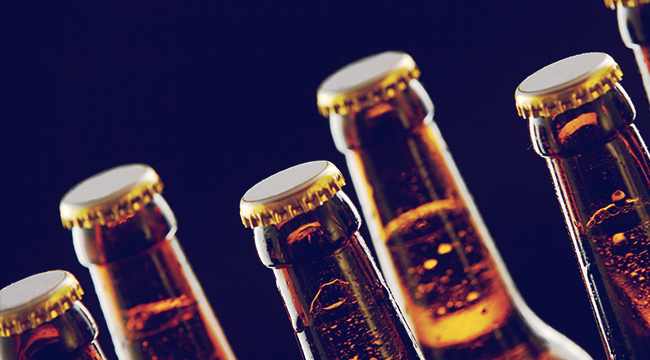
Things are getting really sour in the craft beer world, with more and more breweries are cranking out goses, Berliner weisses, and all kinds of wild yeast-driven ales. This is a departure from the bitterness-focused dawn of the American craft beer era, and the bitterness-obsessed years that followed — full of double and triple IPAs, hopped to high hell. But though beer geeks have proven themselves particularly wary of change, the popularity of sour beers this summer is worth celebrating; if for nothing else than to clear the palate after years of hoppy-ness.
“’Sour beer’ is a term used to describe a number of beer styles that, due to a high level of acidity in the finished brew, strike the palate as being tart or sour,” says Bill Covaleski, founder and brewmaster at Victory Brewing. “The Brewers Association’s Great American Beer Festival recognizes ‘American-style sour ale’ as a style in which lactic, acetic and other organic acids are prominent.”
Those relatively loose criteria make sour beer a very broad designation — like “ale” or “lager” — with the common sub-categories being sour blonde or golden sour, dark sour, and red sour. Classic styles include lambic, Berliner weisse, gose and Flanders red ale. They’re characterized by an acidic flavor profile, with a low pH, usually between 3.0 (very sour) to 3.6 (mildly tart).
Another way to categorize sour beers is to split them into “long-term” and “short term” beers.
“Long-term sour beers are fermented typically with mixed-fermentation, using a couple different types of yeast and bacteria,”says Curtis Chism founder of Council Brewing Company. “Saccharomyces (brewers yeast), Brettanomyces (wild yeast), Lactobacillus and Pediococcus (both are types of lactic acid bacteria).”
This combination of yeast and bacteria are added to the beers to ferment them, typically in a barrel or foeder (a very large oak barrel) and left to age for a significant amount of time (six months to two years is typical). Then the beers are mixed — much like whiskey blends.
“Often times different vintages of the same sour beer or different styles of sour beer and non-sour beer are blended together in varying proportions to achieve the desired outcome,” says Chism.
These beers are typically bottle conditioned (re-fermented in the bottle to achieve the desired level of carbonation) and still have active wild yeast and bacteria, which continue flavor development over many years.
On the other hand, the “short-term” sour beers (often times Berliner weisses and Goses) are “kettle soured” meaning, lactobacillus (the type of bacteria found in yogurt) is added to the kettle to very quickly sour the beer over a couple days, then the beer is boiled to kill the lacto before being fermented with traditional brewers yeast (Saccharomyces).
“The differences are immense,” says Chism. “The traditional mixed fermentation beers have tremendous depth of flavor and complexity, but the short term beers are often one dimensional, lacking in much character.”
Brewers often get hooked on sours when making pilgrimages to Belgium to study their craft, but that doesn’t completely explain the popularity of sours among craft beer drinkers. Covaleski points to the trend catching on because of a familiar childhood treat.
“My theory is that the rise of sour candies such as Sour Patch Kids and Warheads have trained a whole new beer drinking audience to appreciate sour flavors,” he says.
It’s not a bad idea — sours often reveal tart-fruity flavors derived from the yeast and bacterial fermentation. Often times, there are actual fruits added, which can enhance sour beers with more fruitiness, due to the complimentary acid or tartness already associated with the fruit itself. This combination of elements makes the beers perfect for the summer season.
“Most people are looking for something to quench their thirst in the summer,” Chism says. “Sours do that, since the acidity helps to make the beer taste crisp and not linger on the palate.”
Still, don’t expect sour beer brewers to constantly one up each other like the bitter crowd does. The name of the game here is balance.
“A good sour is delightfully balanced and full of complementary flavors,” says Covaleski. “The tartness is just one appealing component.”






